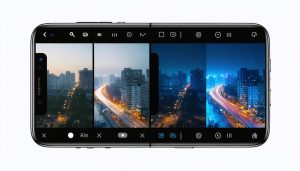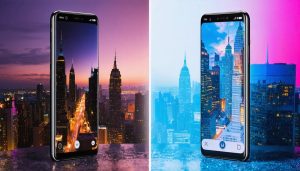
That pocket-sized device you’re holding isn’t just a phone – it’s a sophisticated computer that rivals the processing power of laptops from just a few years ago. Powered by advanced processors and equipped with multiple specialized chips, modern smartphones pack more computing capability than the systems that guided Apollo missions to the moon. From capturing and processing complex HDR photos to running artificial intelligence algorithms that can maximize your smartphone camera performance, these devices represent a revolution in mobile computing. While traditional computers focus on raw processing power, smartphones excel at efficiency and integration, combining sensors, wireless connectivity, and powerful software into an incredibly compact form factor. Understanding your smartphone as a computer opens up endless possibilities for productivity, creativity, and innovation – all in the palm of your hand.
The Computer in Your Pocket: Core Components
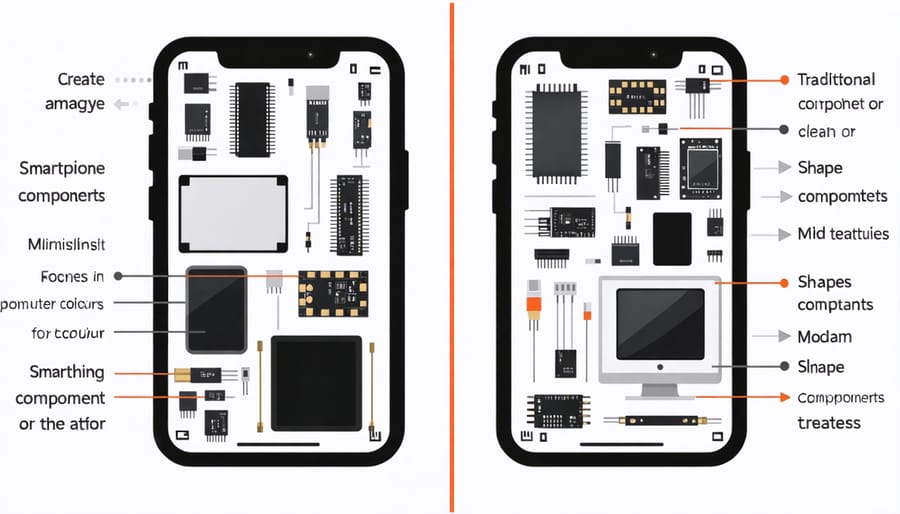
Processing Power: The Brain Behind Your Phone
At the heart of your smartphone lies a remarkable piece of engineering: the mobile processor, often called a System on a Chip (SoC). Unlike traditional desktop computers that have separate components for different tasks, smartphone processors pack everything into a tiny, energy-efficient package.
Modern smartphone processors, like Apple’s A-series chips or Qualcomm’s Snapdragon series, are marvels of miniaturization. They handle not just basic computing tasks, but also power your phone’s camera processing, gaming graphics, and artificial intelligence features. While they might not match the raw processing power of high-end desktop CPUs, they’re optimized for mobile tasks and energy efficiency.
For example, when you’re editing photos on your phone, the processor manages multiple tasks simultaneously: it processes the image data, applies real-time filters, and handles your touch inputs, all while maintaining smooth performance and preserving battery life. This efficient multitasking is possible because mobile processors are specifically designed to balance performance with power consumption, making them perfect for portable computing devices.
The continuous advancement in mobile processor technology is what enables smartphones to perform increasingly complex tasks while maintaining their compact size and all-day battery life.
Memory and Storage: Just Like a Computer
Like your desktop computer, smartphones rely on two types of memory to function effectively: RAM (Random Access Memory) and storage memory. RAM acts as your phone’s short-term memory, temporarily holding active apps and data for quick access. When you’re editing photos or running multiple photography apps, RAM helps your phone juggle these tasks smoothly without slowdowns.
Storage memory, on the other hand, is your phone’s long-term memory, where your photos, videos, apps, and operating system reside. Modern smartphones typically offer between 128GB to 1TB of storage, rivaling many laptops. This space is crucial for photographers who need to store high-resolution images and 4K videos.
Many smartphones also support expandable storage through microSD cards, though this feature is becoming less common in flagship models. Some manufacturers now encourage cloud storage solutions instead, which can be particularly useful for backing up your precious photo collections and accessing them across multiple devices.
The combination of fast RAM and ample storage ensures your smartphone can handle demanding photography tasks while keeping your growing media library secure and accessible.
Camera System: A Computer Vision Powerhouse
Image Processing: More Than Just a Lens
When you snap a photo with your smartphone, there’s much more happening than just light passing through a lens. Your device is actually performing millions of calculations in a fraction of a second, using sophisticated algorithms and artificial intelligence to create the final image you see.
Modern smartphones employ computational photography, which combines multiple exposures into a single shot. When you press the shutter button, your phone captures several images at different settings, analyzing and merging the best elements from each. This process helps achieve better dynamic range, reduced noise, and sharper details than what would be possible with a single exposure.
The phone’s image signal processor (ISP) works alongside the main processor to handle tasks like noise reduction, color correction, and HDR processing. Machine learning algorithms can identify faces, optimize skin tones, and even separate subjects from backgrounds for portrait mode effects. Night mode photography takes this even further, combining multiple long exposures while compensating for hand movement.
These computational techniques explain why today’s smartphone photos can rival those from dedicated cameras, despite having much smaller sensors and lenses. Your phone isn’t just capturing light – it’s using its computing power to interpret and enhance the scene, making strategic decisions about how to present the final image based on complex mathematical models and artificial intelligence.
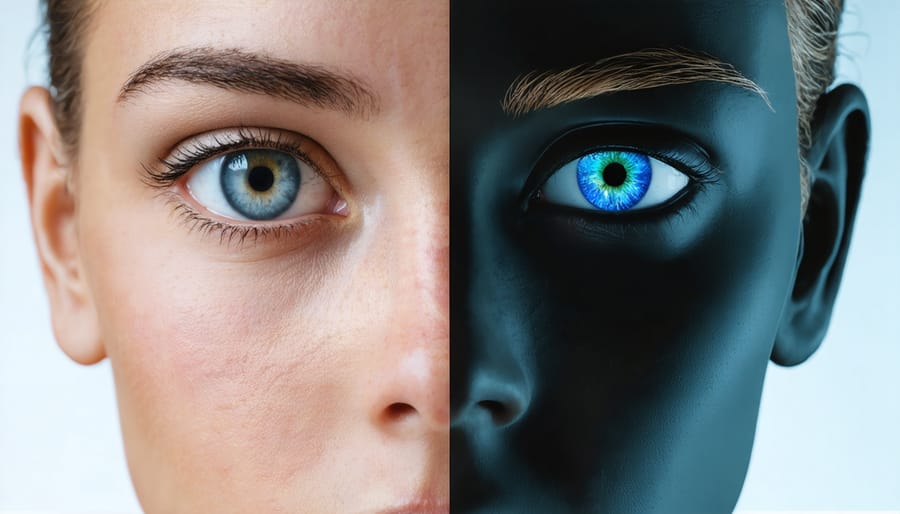
AI and Machine Learning in Mobile Photography
Modern smartphone cameras leverage powerful artificial intelligence and machine learning algorithms to transform raw sensor data into stunning photographs. AI and computational photography have revolutionized how our phones process and enhance images in real-time.
When you tap the shutter button, your smartphone’s neural networks analyze the scene, identifying elements like faces, buildings, or landscapes. This intelligence powers features like portrait mode, where the phone distinguishes between subject and background to create natural-looking depth effects. Night mode photography similarly combines multiple exposures while using AI to reduce noise and maintain detail in low-light conditions.
Smart HDR processing examines different areas of your frame, automatically adjusting exposure levels to capture both bright highlights and shadow details. Machine learning algorithms also enable advanced features like scene optimization, which can recognize thousands of scenarios and adjust camera settings accordingly – whether you’re shooting food, sunsets, or action shots.
The AI capabilities extend to post-processing, where your phone can suggest edits, remove unwanted objects, or even generate entirely new elements within your photos. These features demonstrate how smartphones have evolved beyond simple imaging devices into sophisticated computational photography tools that rival traditional cameras in many situations.
Operating Systems and Apps: The Software Side
Mobile vs Desktop OS: Closer Than You Think
While smartphones and desktop computers might seem worlds apart, their operating systems share remarkable similarities. Modern mobile operating systems like iOS and Android are built on the same fundamental principles as desktop systems like Windows and macOS. Both types manage hardware resources, run applications, handle user input, and process data using nearly identical computing concepts.
The key difference lies in their optimization. Mobile operating systems are specifically designed for touch interfaces, power efficiency, and seamless connectivity, while desktop systems prioritize multitasking and complex software compatibility. However, the gap continues to narrow. Mobile operating systems now support features once exclusive to desktops, such as split-screen multitasking, file management systems, and advanced productivity tools.
This convergence is particularly evident in how both handle photography tasks. Whether you’re editing photos on a smartphone or desktop, you’ll find familiar tools for adjusting exposure, color correction, and applying filters. The underlying processing methods are fundamentally the same, just adapted for different screen sizes and input methods. As mobile processors become more powerful, the distinction between mobile and desktop computing continues to blur.
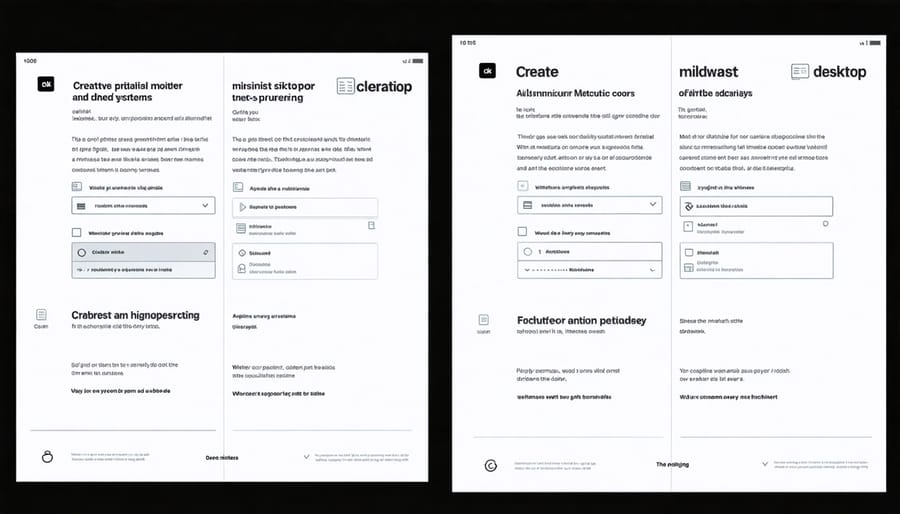
Photography Apps: Desktop-Level Editing
Today’s smartphones pack powerful image processing capabilities that rival desktop computers, offering photographers sophisticated tools for professional photo editing right in their pockets. Apps like Lightroom Mobile, Snapseed, and Darkroom bring desktop-class features to mobile devices, leveraging the computational power of modern smartphone processors.
These apps offer advanced features previously exclusive to desktop software, including RAW file processing, selective adjustments, tone curves, and complex layer management. The Apple A-series and Snapdragon processors, combined with dedicated neural engines, handle complex operations like AI-powered sky replacement and portrait effects with remarkable speed.
What’s particularly impressive is how these apps utilize the smartphone’s touch interface, making intricate adjustments more intuitive than traditional mouse-and-keyboard editing. Photographers can make precise selective adjustments by directly painting on their images, while gesture controls enable quick exposure and color adjustments.
The integration with cloud services also means seamless synchronization between mobile and desktop workflows, allowing photographers to start editing on their phones and finish on their computers without missing a beat.
The Future of Mobile Computing
As we look towards the horizon of mobile computing, smartphones are poised to revolutionize photography in ways we’re only beginning to imagine. Computational photography, powered by increasingly sophisticated AI processors, is breaking the traditional boundaries between hardware and software. Future smartphones will likely feature advanced neural engines dedicated specifically to image processing, enabling real-time photo adjustments that once required powerful desktop workstations.
The integration of multiple camera arrays with specialized sensors is expected to become more sophisticated, potentially incorporating liquid lenses that can physically change their shape to adjust focus instantly. This technology, combined with enhanced machine learning capabilities, could enable smartphones to capture professional-grade images in virtually any lighting condition.
Augmented reality (AR) is another frontier where mobile computing is making significant strides. Future smartphones may project virtual lighting setups into your viewfinder, helping you compose shots before taking them. We’re also likely to see improved depth sensing capabilities that could simulate studio lighting effects with unprecedented accuracy.
Storage solutions are evolving too, with new compression algorithms and cloud integration making it possible to manage ever-larger image files efficiently. The emergence of 6G networks will enable near-instantaneous transfer of high-resolution images and real-time collaborative editing sessions.
Perhaps most exciting is the potential for smartphones to become intelligent photography assistants, learning from your shooting style and suggesting composition improvements, optimal times for specific shots, and even predicting the best moments to capture based on scene analysis. As these devices continue to evolve, the line between professional cameras and smartphones will increasingly blur, democratizing advanced photography techniques for everyone.
In essence, smartphones represent a remarkable evolution in computing technology, packing the power of a traditional computer into a pocket-sized device. Through their sophisticated processors, operating systems, and versatile functionality, smartphones have become indispensable tools for both personal and professional use. They’ve revolutionized how we capture, edit, and share images, transforming mobile photography into a legitimate art form. The integration of advanced computing capabilities with camera technology has made smartphones genuine alternatives to dedicated cameras in many situations. As these devices continue to evolve, the line between smartphones and traditional computers grows increasingly blurred, offering photographers and creative professionals an all-in-one solution for their digital needs. What began as a communication device has truly become a powerful computer that just happens to make phone calls.

